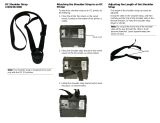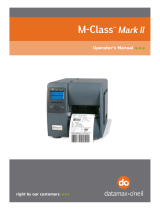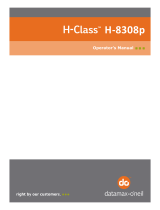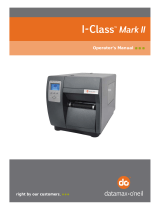
Copyright Information
CG Triumvirate is a trademark of Agfa Corporation.
Copyright Information
In no event shall Datamax-O’Neil be liable to the purchaser for any indirect,
special or consequential damages or lost profits arising out of or relating to
Datamax-O’Neil’s products, or the performance or a breach thereof, even if
Datamax-O’Neil has been advised of the possibility thereof. Datamax-O’Neil’s
liability, if any, to the purchaser or to the customer of the purchaser hereunder
shall in no event exceed the total amounts paid to Datamax-O’Neil hereunder by
the purchaser for a defective product.
In no event shall Datamax-O’Neil be liable to the purchaser for any damages
resulting from or related to any failure or delay of Datamax-O’Neil in the delivery
or installation of the computer hardware, supplies or software or in the
performance of any services.
Some states do not permit the exclusion of incidental or consequential damages,
and in those states the foregoing limitations may not apply. The warranties here
give you specific legal rights, and you may have other legal rights which vary
from state to state.
Firmware (Software) Agreement
The enclosed Firmware (Software) resident in the EPROM’s is owned by
Licensor or its suppliers and is licensed for used only on a single printer in the
user’s Trade or Business. The User agrees not to, and not to authorize or
permit any other person or party to, duplicate or copy the EPROM’s or the
information contained in the EPROM’s. The firmware (Software) is protected
by applicable copyright laws and Licensor retains all rights not expressly granted.
In no event will Licensor or its suppliers be liable for any damages or loss,
including direct, incidental, economic, special, or consequential damages, arising
out of the use or inability to use the Firmware (Software).
Information in this document is subject to change without notice and does not
represent a commitment on the part of Datamax-O’Neil Corporation. No part of
this manual may be reproduced or transmitted in any form or by any means, for
any purpose other than the purchaser's personal use, without the expressed
written permission of Datamax-O’Neil Corporation.
All rights reserved
Copyright © 2012, Datamax-O’Neil
Part Number 88-2337-01, Revision D























